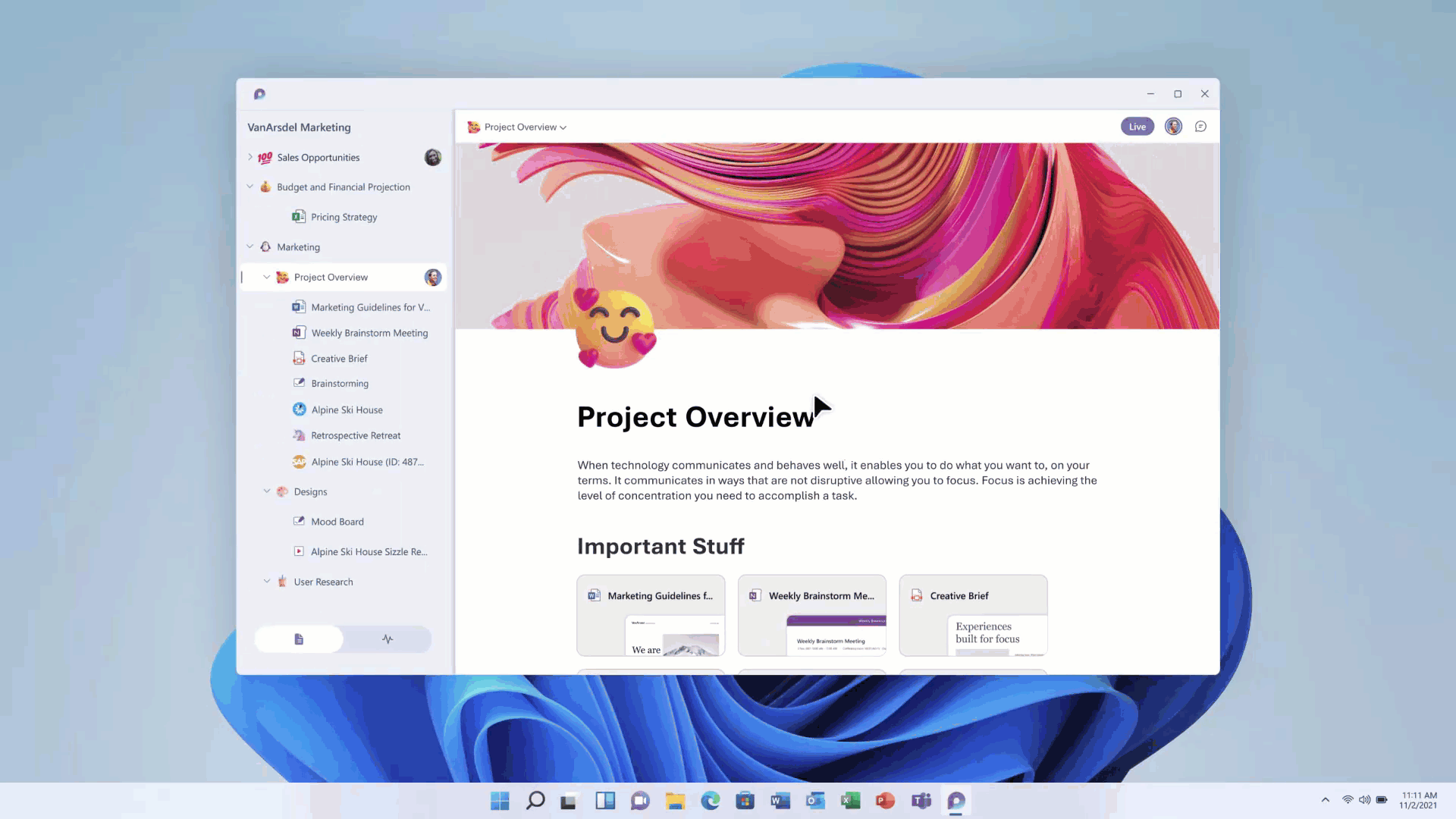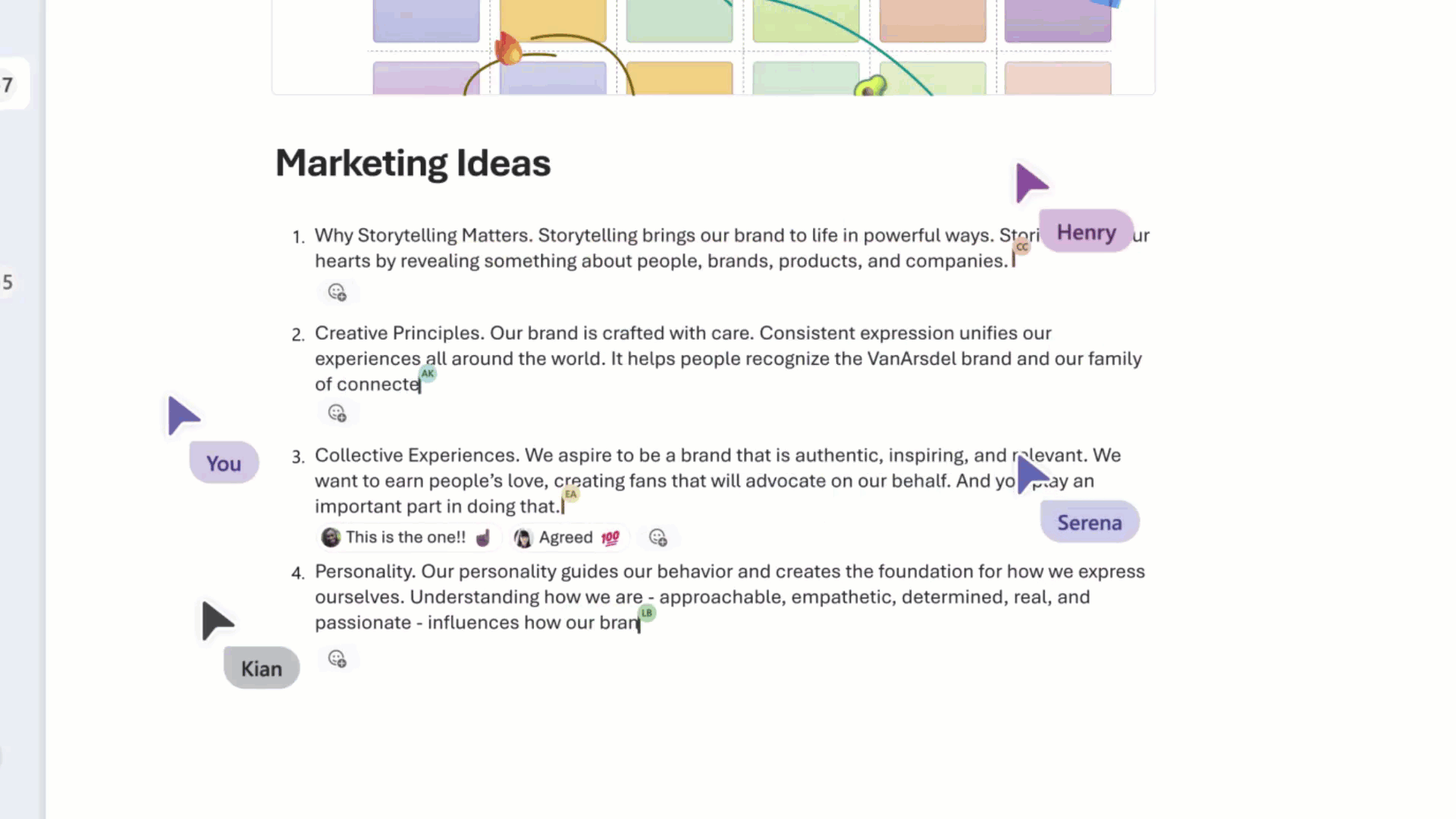Microsoft launches Loop, its Notion competitor, in public preview
Microsoft Loop, a Notion-like hub for managing tasks and projects that sync across Microsoft 365 apps and services, launched in public preview today.
Loop is available to users with a Microsoft Account or Azure Active Directory account. A companion app for iOS and Android is set to arrive soon; Microsoft didn’t provide firm timing.
Unveiled at Ignite 2021, Loop is in some ways Microsoft’s answer to Google Workspace Spaces, which provides dashboards for real-time, digital-first project collaboration. As with most team-based productivity platforms, Loop has progress-tracking tools for projects and two-way sync with services, including Trello.
So what’s unique about it? Well, Loop consists of three main elements — Loop components, Loop pages and Loop workspaces — that together can be used to paste real-time blocks of content into apps like Outlook, Microsoft Teams and Word. (My colleague Frederic Lardinois once compared the experience to the ill-fated Google Wave.) Microsoft says it’s designed to bridge the gaps of working in virtual teams — gaps that became increasingly apparent during the pandemic, when Loop was developed.

Loop components are essentially JavaScript widgets that let users collaborate while in the flow of work, for example in a chat, email, document or online meeting. Components can be as simple as lists, tables and notes or as complex as a customer sales opportunity from Dynamics 365, and they always stay in sync across Microsoft 365 apps.
Thanks to the syncing capabilities, edits to Loop components — for example, tables — will be reflected wherever they’re embedded or shared. In the future, Microsoft says it plans to add Loop components that facilitate business workflows, starting with Dynamics 365 records, and allow developers to build entirely custom Loop components.
As for Loop pages, they’re flexible canvases where users can organize their Loop components and pull in elements like links, files or data. (Loop provides a number of page templates for quick setup.) Loop workspaces are broader in scope, representing shared platforms where users can see and group everything important to their projects.
Niftily, Loop can search for and recommend relevant documents and co-workers when creating a workspace. Up to 50 people can edit a workspace at once, reacting to edits with emojis and comments, but Microsoft recommends teams of two to 12 so that the interface doesn’t feel too claustrophobic.

Image Credits: Microsoft
Also of note, Microsoft is building its new Microsoft 365 Copilot system into Loop. In private testing for the moment, the AI-powered Copilot will provide suggestions to create a brainstorm or blueprint and allow one or more users to edit the suggestions and then share them in apps like Outlook and Teams.
It’s an impressive range of features, but can Loop compete with Notion? That remains to be seen. As The Verge’s coverage of Loop notes, Notion hasn’t exactly rested on its laurels, recently launching an AI-powered system that analyzes meeting notes, creates summaries, surfaces important information and even rewrites and generates text.
It’s early days for Loop, but Microsoft — while admittedly benefiting from the massive built-in Microsoft 365 user base — has its work cut out for it.


